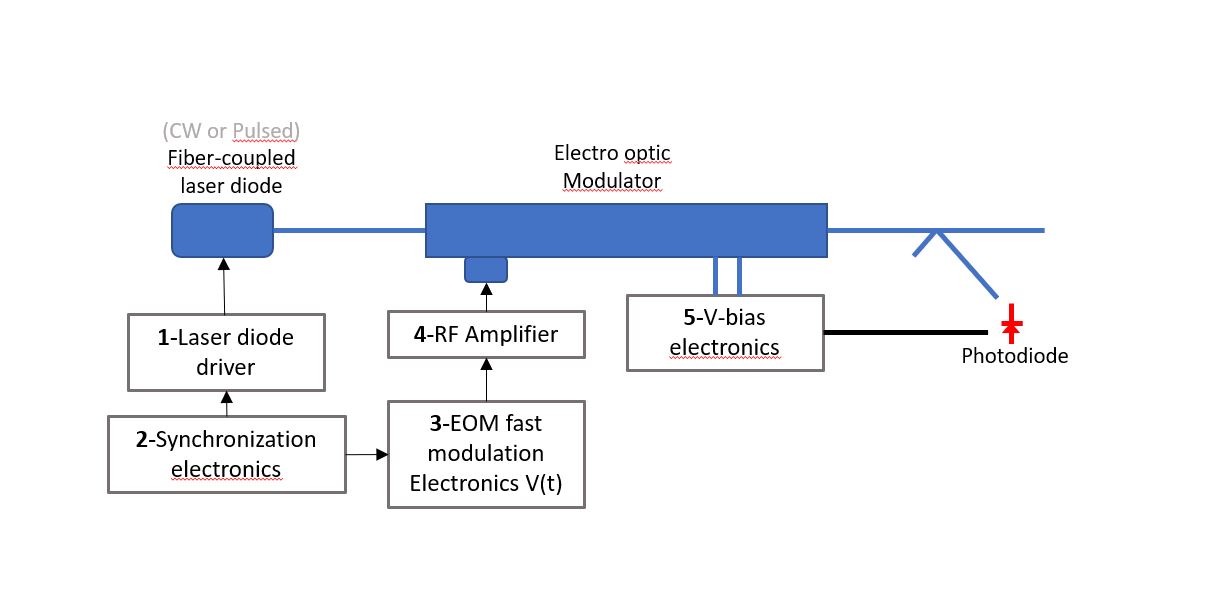Acousto-optic modulators (AOM) allow the intensity of light to be controlled and modulated at rates that far exceed mechanical shutters, even up to 70 MHz. Our modulators are optimized for low scatter and high laser damage threshold. Rise time, modulation rate, beam diameter, and power handling needs of the application need to be understood in order to identify the best acousto-optic modulator and RF driver solution.
Talor Gooch shot a 6-under 65 on Sunday at Fox Den to erase a five-shot deficit entering the day and win the News Sentinel Open. About 1261 days ago Associated Press On call for first child. G&H acousto-optic deflectors (AODF) provide precise spatial control of an optical beam, whether performing 1D or 2D scanning or executing beam deflection through a fixed angle.
An acousto-optic modulator (AOM) uses sound waves within a crystal to create a diffraction grating. As the power of the applied RF signal is varied, the amount of diffracted light varies proportionally. Modulators can be used like a shutter (cycling light on and off at a set frequency), or as a variable attenuator (controlling the intensity of transmitted light dynamically).
The most important factor in selecting a modulator is the required speed. This influences the choice of material, modulator design, and RF driver to be used. The speed of a modulator is described by the rise time, which determines how quickly the modulator can respond to the applied RF driver, and limits the modulation rate. Rise time is proportional to the time required for the acoustic wave to traverse the optical beam and for this reason is influenced by the beam diameter within the modulator.
Modulators fall into two general categories as regards speed. Very fast modulators can provide modulation frequencies up to ~70 MHz and can have a rise time as low as 4 ns. The input beam must be focused very tightly focused into the modulator to achieve this speed. Lower frequency modulators do not have this constraint, however, and can accept larger input beams. Their rise time is usually specified relative to the input beam diameter, in ns/mm.
In addition to speed, we also consider other selection criteria when identifying the right modulator and RF driver:
- Wavelength of operation
- Optical power
- Type of modulation needed (analog or digital)
- Beam diameter
- Desired contrast ratio
- Light polarization
Most applications require high contrast between the “on” and “off” states of the modulator, and thus make use of the first order diffracted beam. This results in extinction ratios of 40 dB and higher, but results in lower throughput of the deflected beam (typically 85-90%). In some applications such as intensity leveling, transmission is more important and a contrast ratio of ~10 dB is acceptable. This allows the undiffracted 0th order beam to be used, typically resulting in > 99% light throughput.
Applications of Modulators

Taint Gooch

Heterodyne interferometry, intensity levelling, intensity modulation, laser cooling, laser Doppler velocimetry, laser Doppler vibrometry (LDV), laser linewidth measurements, LIDAR, marking, material processing, micromachining, printing, via drilling

Recorded in several spellings including Gough, Gouge, Gouch and Gooch, this interesting surname is medieval English. It has two possible origins, both ultimately Gaelic or Celtic. Firstly it may be an occupational name deriving from the pre 7th century Ancient Gaelic word 'gobha', or the Cornish-Breton word 'goff', both meaning worker in iron. As Gooch and sometimes Gouch, it is claimed to be widespread in the region of England known as East Anglia, the name there being was introduced from Brittany by followers of Duke William of Normandy, at or after the Norman Conquest of England in 1066. Secondly it may derive from another Gaelic or Celtic word 'coch', meaning red. This was much used in pre medieval Wales and also England, as a nickname for a person with red hair or ruddly complexion. It may also have been an ethnic name of abuse for the Anglo-Saxon invaders of the 5th century, who settled in England in the 6th century, and gradually pushed many Olde English into Wales, Cornwall, and Brittany, in France. The surname is one of the earliest recorded with examples from early records and charters including Felicia Goch in the rolls known as the 'Calendar of Inquisitones post mortem', in Gloucestershire in 1305, the Subsidy Rolls of Essex in 1327 mention a John Guch and William Gugge, and the court rolls of the borough of Colchester list John Gooch in 1374. Thomas Gouge (1609-1681) a notable namebearer, was educated at Eton and Kings College Cambridge and provided work for the poor in flax and hemp-spinning. The first recorded spelling of the family name is shown to be that of Robert Goch. This was dated 1203, in the registers known as the 'Pleas before the King or his Justices (1198 -1202) for the county of Shropshire. Throughout the centuries, surnames in every country have continued to 'develop' often leading to astonishing variants of the original spelling.
© Copyright: Name Origin Research 1980 - 2017
Talor Gooch
Surname scroll for: Gooch


Gooch & Housego Fremont Ca
Enjoy this name printed onto our colourful scroll, printed in Olde English script. An ideal gift.
